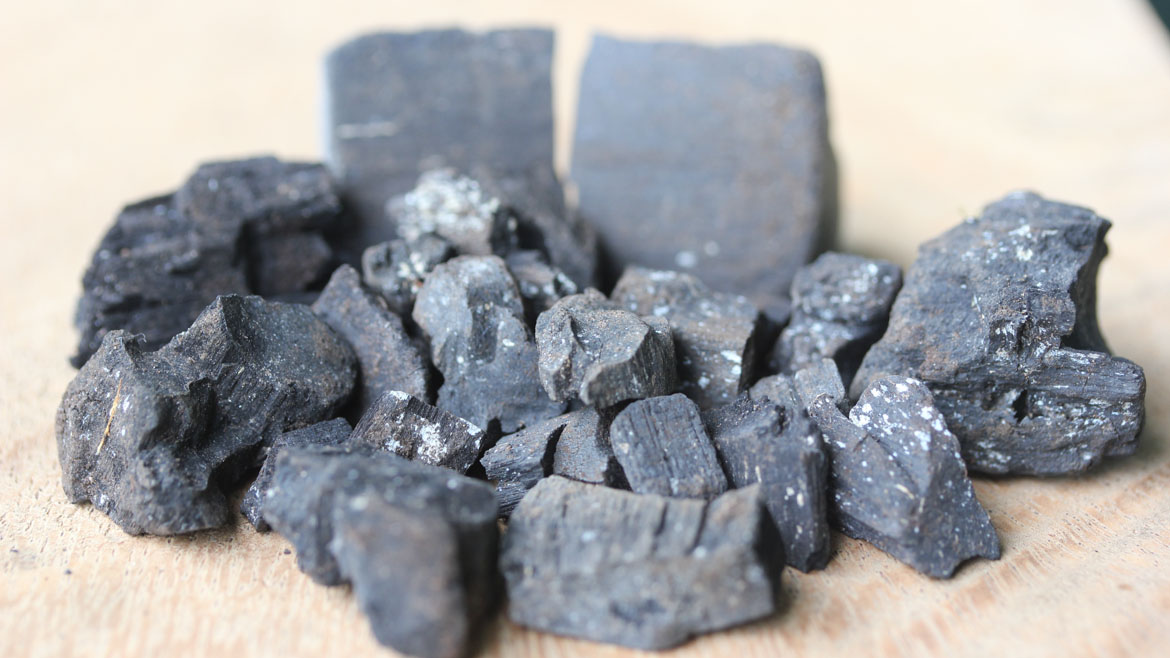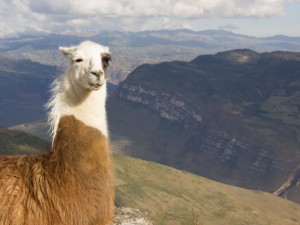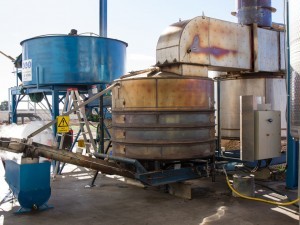
A while ago I was invited by a customer to visit a pre-modern charcoal kiln he had found in the jungle behind his house. I was surprised to find it was right off the path yet covered in plants and barely recognizable from a distance. Up close it was easy to see, the top had caved in but the walls and vent of what appeared like a beehive type kiln were still intact. Even more exciting was what I found in the soil and rocks within and surrounding the kiln – sizable and well defined pieces of char! The kiln was built entirely of local stone, some of it apparently carved and was kept together with old-style crushed coral mortar. I’ve been told the age of the kiln is 100 years or more.
This piece is highly figured, likely from a medium density hardwood. I like the patterns of growth on it. Hard to tell exactly what the white spots are.So here I am a modern char producer holding pieces of char much older than I, and they still have snap. I had seen the photos of Terra Preta soils, where char had been placed hundreds of years ago, seen data from research papers guessing the longevity of char in soil, but actually holding it in my hand was a whole new experience. It really helped confirm in my mind what I had already learned, that the lifetime of char in the soil is far beyond ours. In reference to biochar this is really important and one of the biggest reasons I was initially drawn to the idea. I have been applying mulches, composts and fertilizers for years only to watch most all of it melt away. Don’t get me wrong I still apply those, but now with biochar as well. I like the idea that it not only improves the soil for me, but for my children and theirs to come. These pieces of char had an impact on me, and now I have photographed them so I can share that with you.
This is one beautiful old piece of history.This piece in particular was intriguing. When I found it, it was a perfectly cut wedge obviously from very dense wood. It had a fracture in it that I opened up, which is what the picture here is showing. The sharpness of the edges, and the fine filaments of the roots or fungi that are visible on the surface make it seem delicate, belying the fact that it has been lying there in the jungle for decades.
The same beautiful piece up close, really close.This is another picture of the same piece. I got as close as I could with my macro lens, then zoomed in again on the computer. The biology covering the surface is pretty darn cool eh. Maybe I am just a geek, but I think this black stuff is one awesome form of carbon, just one step away from diamonds. Hope you enjoy,
– Josiah Hunt






